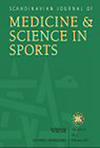Using Self‐Reported Training Characteristics to Better Understand Who Is More Likely to Sustain Running‐Related Injuries Than Others: The Garmin‐RUNSAFE Running Health Study
IF 3.5
2区 医学
Q1 SPORT SCIENCES
引用次数: 0
Abstract
Running is a popular form of physical activity, yet it comes with risks, including running‐related injuries (RRIs). This cohort study aimed to use self‐reported baseline data on running experience, weekly running frequency, greatest running distance in 1 week, and running program to investigate if certain adult runners were more likely to sustain RRI than others. Runners, aged ≥ 18 years, familiar with the English language and using a Garmin watch to track their running were included. Running data and injury status were collected prospectively through the Garmin Connect application and weekly questionnaires over 18 months. Exposure variables were self‐reported running experience (years), weekly running frequency and distance, and use of structured running program (last 3 months before inclusion). The outcome was RRI. Time to event statistics was used to calculate cumulative risk differences (cRD) within groups of each exposure. Data were analyzed at 1000 km (km). A total of 7391 runners were included. The cumulative injury proportion was 57.8% [95% CI: 56.4%; 59.2%] after 1000 km. Those running > 105 km (cRD = −31.6, 95% CI −23.1; −40.1), 7 times per week (cRD = −47.1, 95% CI −35.9; −58.3) and followed a structured running program (cRD = 4.4; 95% CI 0.9; 7.8) had the fewest new RRIs. For running experience, those with few (< 1 years) or many years (> 40 years) of experience had the most RRIs. Runners were more prone to sustain an RRI if they had few (< 1) or many (> 40) years of running experience, lower total weekly running frequency (< 2 times/week), shorter weekly running distance (< 25 km), or did not use a structured running program.使用自我报告的训练特征来更好地了解谁比其他人更容易遭受与跑步相关的伤害:Garmin - RUNSAFE跑步健康研究
跑步是一种流行的体育活动形式,但它也有风险,包括与跑步相关的伤害(RRIs)。这项队列研究的目的是使用自我报告的跑步经验、每周跑步频率、一周最大跑步距离和跑步计划的基线数据来调查某些成年跑步者是否比其他人更容易持续RRI。年龄≥18岁、熟悉英语并使用Garmin手表跟踪跑步的跑步者被纳入研究对象。在18个月内,通过Garmin Connect应用程序和每周问卷调查前瞻性地收集跑步数据和受伤状况。暴露变量包括自我报告的跑步经验(年),每周跑步频率和距离,以及使用结构化跑步计划(纳入前最后3个月)。结果就是RRI。事件发生时间统计用于计算每次暴露组内的累积风险差异(cRD)。数据在1000公里处进行分析。共有7391名运动员参加了本次比赛。累积损伤比例为57.8% [95% CI: 56.4%;(59.2%)。那些跑步的人;105 km (cRD = - 31.6, 95% CI = - 23.1;- 40.1),每周7次(cRD = - 47.1, 95% CI = - 35.9;−58.3),并遵循结构化的跑步计划(cRD = 4.4;95% ci 0.9;7.8)的新发RRIs最少。对于跑步经验,很少(<;1年)或多年(>;40年经验的人风险风险最高。如果跑步者很少(<;1)或许多(>;40年跑步经验,每周总跑步频率(<;2次/周),每周跑步距离较短(<;25公里),或者没有使用结构化的跑步计划。
本文章由计算机程序翻译,如有差异,请以英文原文为准。
求助全文
约1分钟内获得全文
求助全文
来源期刊
CiteScore
7.90
自引率
4.90%
发文量
162
审稿时长
3 months
期刊介绍:
The Scandinavian Journal of Medicine & Science in Sports is a multidisciplinary journal published 12 times per year under the auspices of the Scandinavian Foundation of Medicine and Science in Sports.
It aims to publish high quality and impactful articles in the fields of orthopaedics, rehabilitation and sports medicine, exercise physiology and biochemistry, biomechanics and motor control, health and disease relating to sport, exercise and physical activity, as well as on the social and behavioural aspects of sport and exercise.

 求助内容:
求助内容: 应助结果提醒方式:
应助结果提醒方式:


